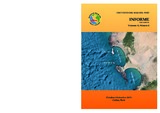Por favor, use este identificador para citar o enlazar este ítem:
https://hdl.handle.net/20.500.12958/2996Registro completo de metadatos
| Campo DC | Valor | Lengua/Idioma |
|---|---|---|
| dc.contributor.author | Sarmiento Bendezú, Héctor | - |
| dc.contributor.author | Donayre Salazar, Susan | - |
| dc.contributor.author | Flores Castillo, Daniel | - |
| dc.contributor.author | Zeballos Flor, Jorge | - |
| dc.date.accessioned | 2016-03-29T19:43:35Z | - |
| dc.date.available | 2016-03-29T19:43:35Z | - |
| dc.date.issued | 2015 | - |
| dc.identifier.citation | Inf Inst Mar Perú 42(4), 2015. p. 491-498 | es_ES |
| dc.identifier.uri | https://hdl.handle.net/20.500.12958/2996 | - |
| dc.description | Informe IMARPE;Vol. 42, N° 4, 2015, p.491-498 | es_ES |
| dc.description.abstract | En diciembre 2010, se realizó una evaluación poblacional de la concha de abanico (Argopecten purpuratus) con la finalidad de determinar la distribución, abundancia y estructura poblacional en los bancos naturales de bahía Independencia, se empleó el muestreo al azar estratificado por profundidad. Las tallas fluctuaron entre 4 y 101 mm de altura valvar, media en 61,4 mm y se registró el 58,2% de ejemplares con tallas mayores a la mínima de extracción (≥65 mm). Predominaron ejemplares desovantes (92,1%). Se distribuyó formando agregaciones con concentraciones entre 1 y 5 ind.m-2. La población y biomasa total se estimó en 12,47 millones (±25,6%) y 948,2 t (±27,7%), respectivamente. Tunga y La Pampa se constituyeron como las áreas más importantes en población y biomasa. | es_ES |
| dc.description.abstract | ABSTRACT: In December 2010, a population-based assessment of the scallop (Argopecten purpuratus) in order to determine the distribution, abundance and population structure in the natural banks of Independence bay was held, the stratified random sampling depth was used. The sizes ranged from 4 to 101 mm of valvar height, average 61.4 mm and 58.2% of specimens were recorded with sizes larger than the minimum extraction (≥65 mm). Spawners predominated (92.1%) specimens. Forming aggregations were distributed with concentrations between 1 and 5 ind.m-2. The population and total biomass was estimated at 12.47 million (± 25.6%), and 948.2 t (± 27.7%), respectively. Tunga and La Pampa were established as the most important areas in population and biomass. | - |
| dc.description.sponsorship | Instituto del Mar del Perú | es_ES |
| dc.language.iso | spa | es_ES |
| dc.publisher | Callao | es_ES |
| dc.relation.ispartofseries | Informe IMARPE;Vol. 42, N° 4, 2015 | - |
| dc.rights | info:eu-repo/semantics/openAccess | es_ES |
| dc.rights.uri | https://creativecommons.org/licenses/by/4.0/ | - |
| dc.source | Instituto del Mar del Perú - IMARPE | es_ES |
| dc.source.uri | Repositorio Digital IMARPE | es_ES |
| dc.subject | Argopecten Purpuratus | es_ES |
| dc.subject | Bahía Independencia - Pisco | es_ES |
| dc.subject | Concha De Abanico | es_ES |
| dc.subject | Población | es_ES |
| dc.subject | Biomasa | es_ES |
| dc.title | Evaluación poblacional de Argopecten purpuratus (Lamarck, 1819) en bahía Independencia. Pisco, diciembre 2010 | es_ES |
| dc.title.alternative | Population assessment of Argopecten purpuratus (Lamarck, 1819) Independence bay-Pisco, December 2010 | es_ES |
| dc.type | info:eu-repo/semantics/article | es_ES |
| Aparece en las colecciones: | Informe vol. 42(4) 2015 | |
Ficheros en este ítem:
| Fichero | Descripción | Tamaño | Formato | |
|---|---|---|---|---|
| Informe 42(4)-6.pdf | 1,88 MB | Adobe PDF |  Visualizar/Abrir |
Este ítem está sujeto a una licencia Creative Commons Licencia Creative Commons

